No products in the cart.
NEWS
Understanding the World of Squash: A Biogarden.Asia Guide to Popular Varieties
Squash, a wonderfully versatile group of vegetables, belongs to the vast Cucurbitaceae family, sharing kinship with pumpkins, gourds, cucumbers, and melons. This diverse family boasts hundreds of species, offering an incredible array of shapes, sizes, colors, and flavors. While historically utilized for both sustenance and practical purposes, navigating the sheer number of squash varieties can feel overwhelming, especially when limited garden space dictates careful choices.
For the home gardener and culinary enthusiast alike, focusing on the two primary classifications – summer squash and winter squash – simplifies the selection process. These categories define not only the harvest time but also significantly impact texture, storage capability, and best culinary uses. As experts at Biogarden.Asia, we understand the joy and satisfaction of growing these rewarding plants. Let’s explore some of the most popular and interesting types to consider for your garden and kitchen.
Exploring Common Squash Varieties
Squash are broadly categorized based on when they are typically harvested and their resulting characteristics. Summer squash varieties are generally picked when young and tender, with edible skins and soft seeds. In contrast, winter squash matures on the vine, developing hard rinds and firm flesh, allowing for longer storage through the cooler months.
Summer Squash Varieties
These types are enjoyed throughout the warmer months. Their tender skins and quick cooking times make them perfect for fresh preparations.
Zucchini
Perhaps the most ubiquitous summer squash, zucchini is characterized by its elongated shape and smooth, thin, typically green skin, although vibrant yellow varieties are also common. The flesh is mild and slightly sweet, making it incredibly adaptable. Zucchini can be enjoyed raw in salads, sautéed, grilled, roasted, stuffed, or even incorporated into baked goods like bread and muffins. Both the young fruits and the blossoms are edible, offering unique culinary opportunities. For optimal flavor and texture, harvest zucchini when they are still relatively small; larger fruits tend to develop tougher skins and larger, harder seeds, impacting their overall quality. Growing zucchini can be incredibly prolific, so checking plants daily during peak season is key to catching them at their prime size.
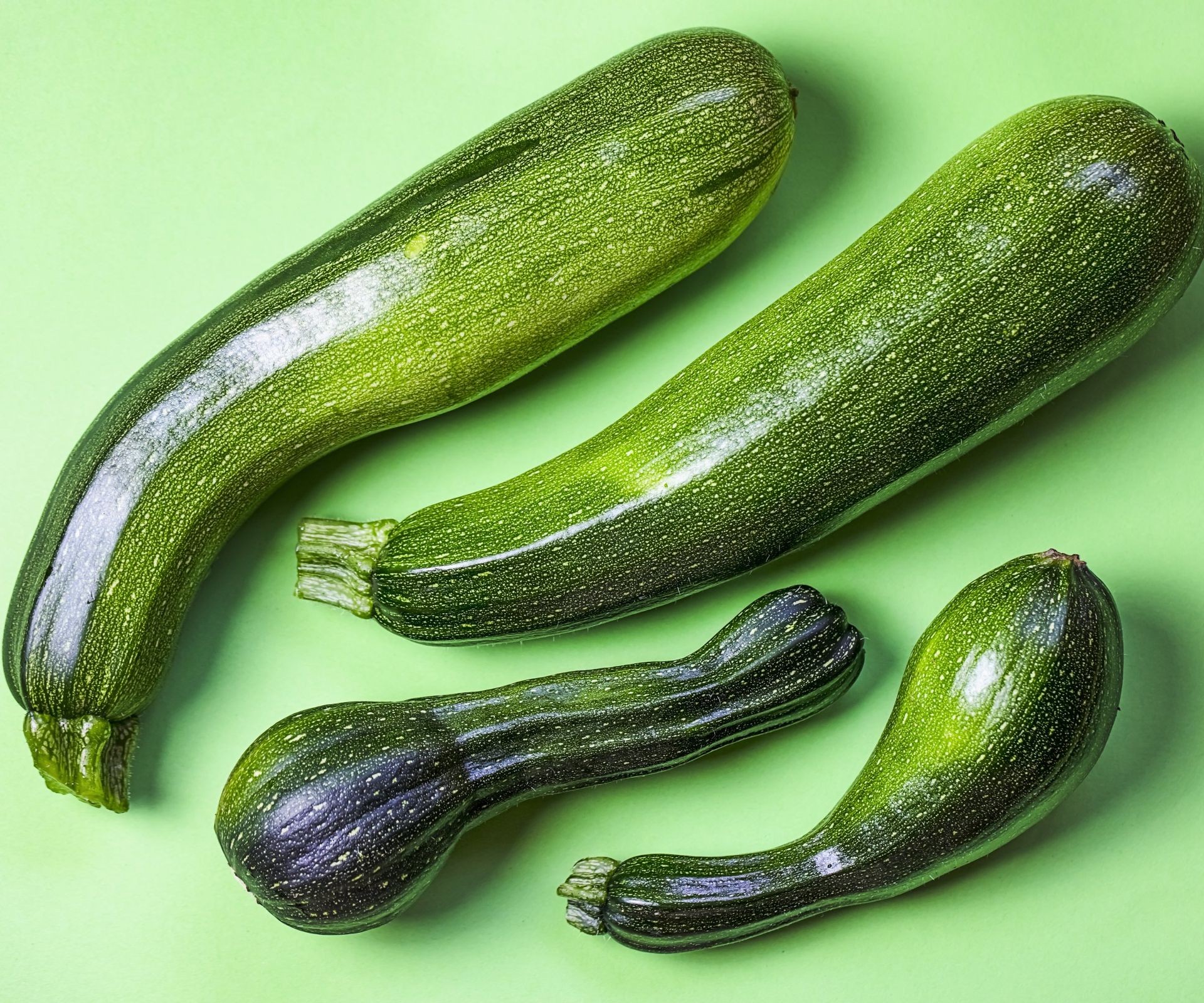 Four green zucchini side by side
Four green zucchini side by side
Pattypan Squash
Easily identifiable by their distinctive saucer or patty shape with scalloped edges, pattypan squash are as visually appealing as they are delicious. Available in shades of green, yellow, and white, these small squash have a slightly firmer texture than zucchini and a mild, buttery flavor. They are excellent when quickly sautéed to preserve their delicate crunch, grilled whole or halved, or stuffed and baked. Their size makes them particularly convenient for individual servings.
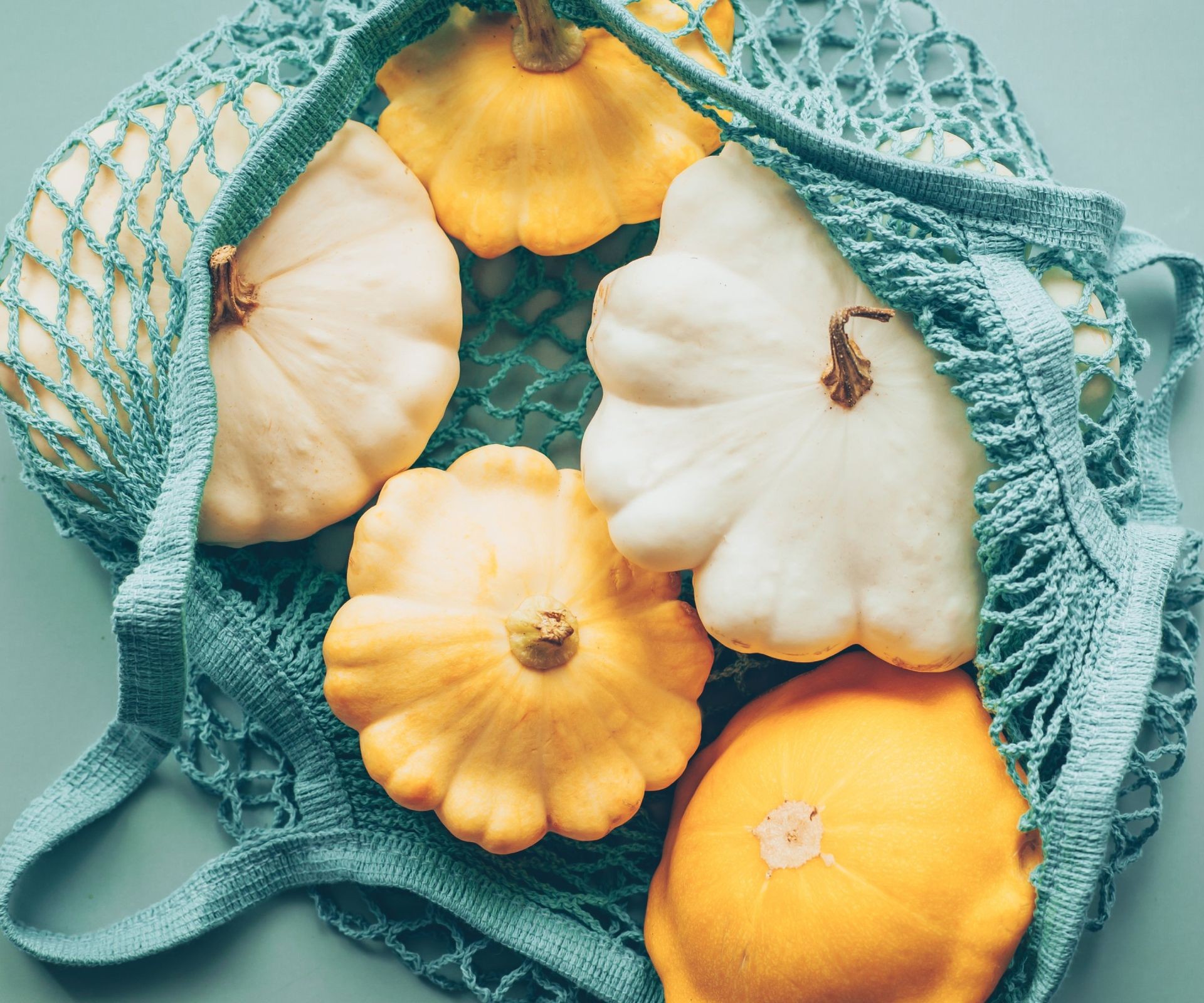 A variety of yellow and white pattypan squash
A variety of yellow and white pattypan squash
Luffa
A fascinating entry in the squash family often recognized more for its dried fibrous interior than its fresh fruit, the luffa (or loofah) squash is indeed edible when young. Immature luffa resembles a ridged zucchini and can be eaten raw, much like a cucumber, or cooked into dishes. As the fruit matures and dries, the outer skin peels away to reveal the tough, sponge-like network of vascular bundles we know as a loofah sponge, traditionally used for scrubbing.
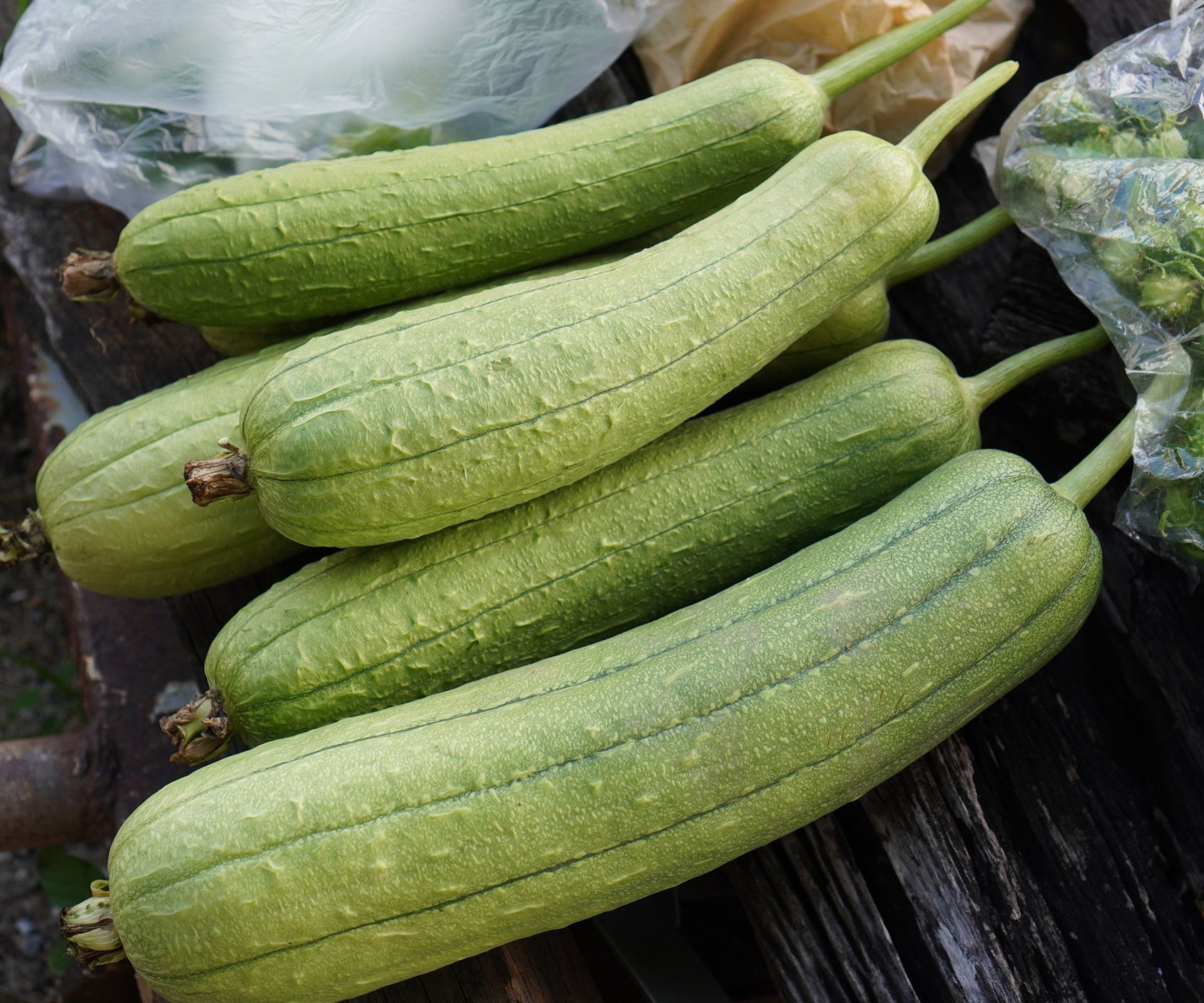 A collection of fibrous luffa gourds
A collection of fibrous luffa gourds
Yellow Squash
A staple in many summer gardens, yellow squash comes in two main forms: crookneck and straightneck. Both share a bright yellow skin, often with a slightly bumpy texture, and creamy white flesh. Crookneck squash develops a characteristic curve near the stem end, often harvested when slightly more mature, leading to somewhat larger seeds and thicker skin compared to other summer squash. Straightneck varieties maintain a uniform, straight shape. Both types have a mild flavor and can be used interchangeably with zucchini in most recipes, from simple sautés to casseroles.
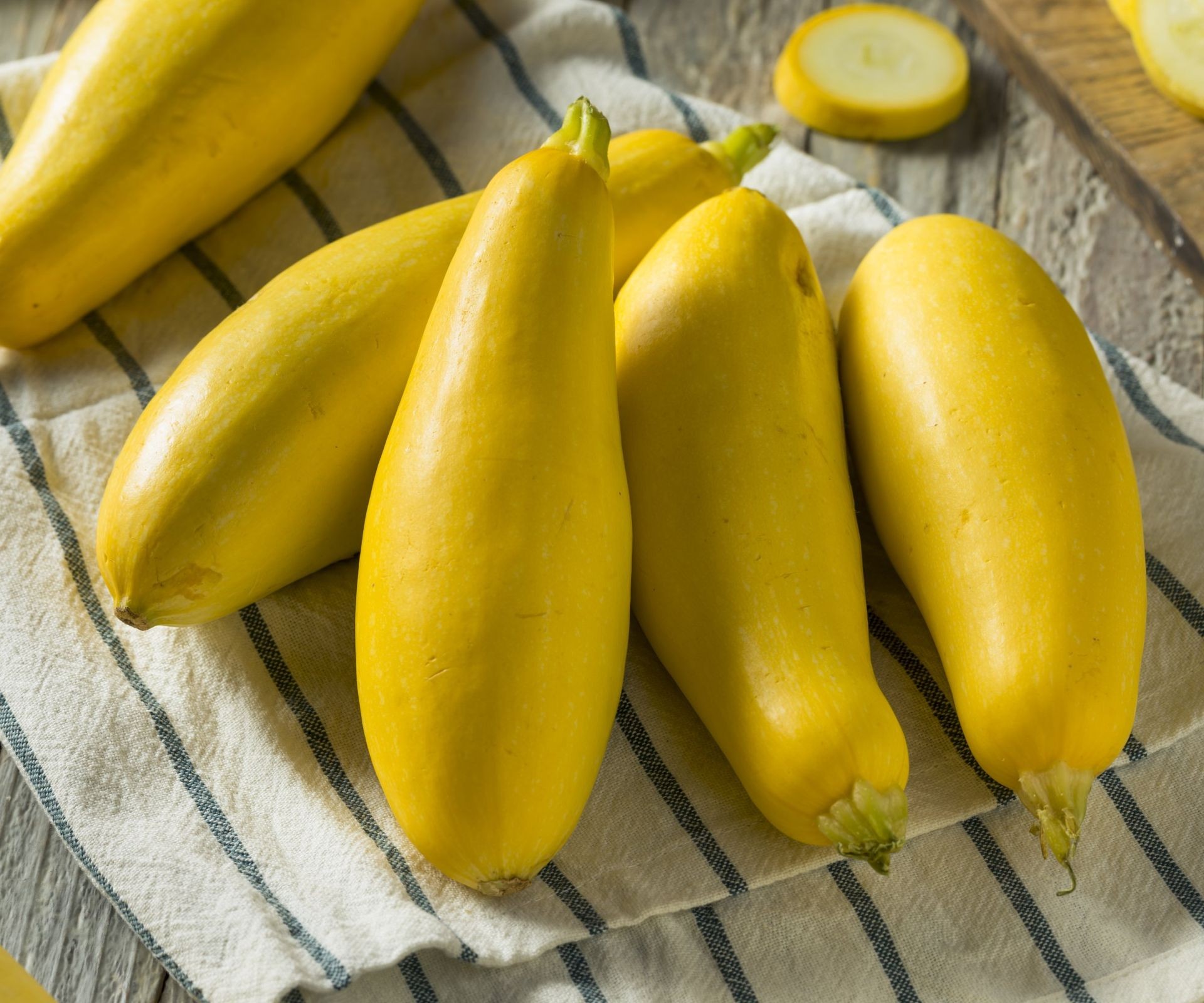 Group of yellow squash with and without curved necks
Group of yellow squash with and without curved necks
Zephyr Squash
A modern hybrid resulting from crossing yellow crookneck with acorn and delicata winter squash varieties, Zephyr squash blurs the lines between summer and winter types. It has a unique two-toned appearance, featuring a yellow upper half and a light green blossom end. The flesh is dense, with a rich, sweet, nutty flavor reminiscent of its winter squash parents. This tender-skinned variety is best treated as a summer squash, excellent for sautéing, grilling, or roasting, highlighting its distinct flavor profile. Like many squash, its leaves and flowers are also edible.
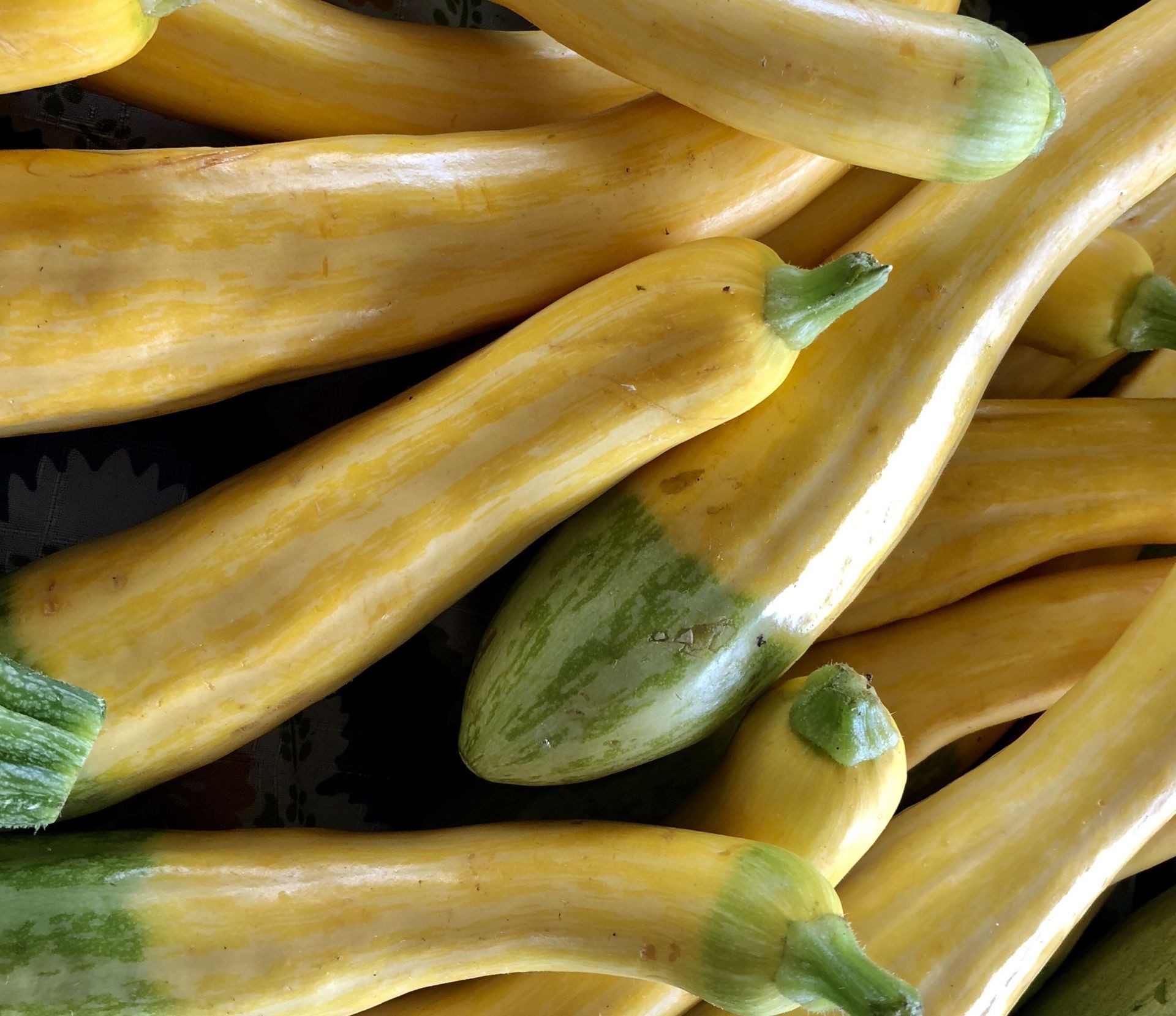 Close-up of two-toned green and yellow zephyr squash
Close-up of two-toned green and yellow zephyr squash
Winter Squash Varieties
Harvested in late summer or early fall when fully mature, winter squash is known for its hard rind, dense flesh, and long storage life. Their flavors tend to be richer and sweeter, often developing further during storage.
Spaghetti Squash
A truly unique winter squash, spaghetti squash earns its name from the way its cooked flesh naturally separates into spaghetti-like strands. The rind is typically a light yellow to orange color. When baked or boiled, the mild, neutral-flavored pulp can be scraped out with a fork to create a vegetable alternative to pasta, easily paired with sauces or other toppings. Its mildness makes it a favorite for substituting traditional noodles, offering a lighter option.
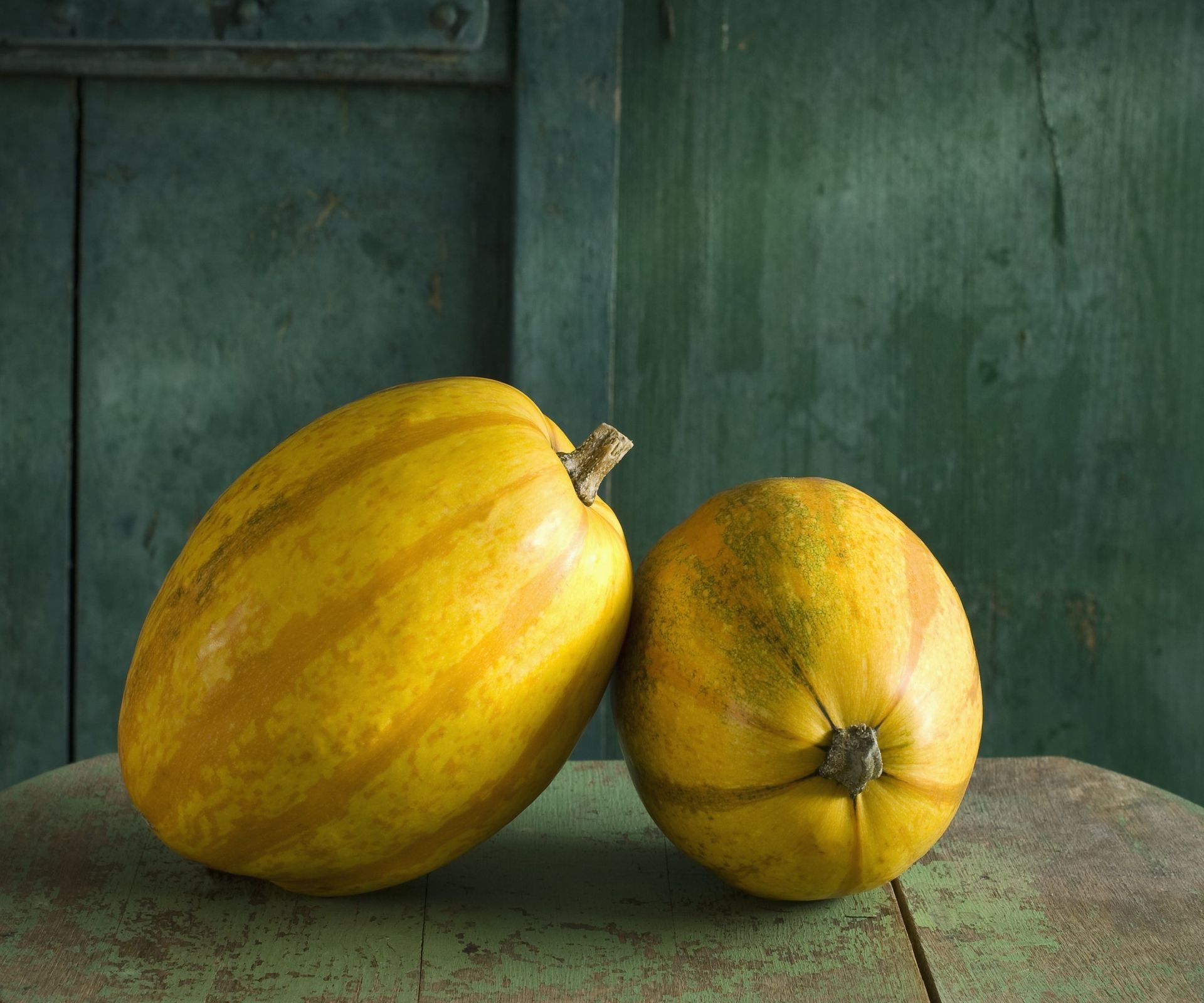 Two uncut spaghetti squash displaying their color variation
Two uncut spaghetti squash displaying their color variation
Kabocha Squash
Also known as Japanese pumpkin, Kabocha squash features a bumpy, dark green rind and dense, bright orange flesh. It is prized for its exceptionally sweet, rich, and somewhat nutty flavor, often compared to a cross between pumpkin and sweet potato, with hints of roasted chestnut. Kabocha is a staple in Japanese and Thai cuisine and is increasingly popular globally. Its flesh becomes wonderfully tender and slightly custardy when cooked, making it excellent for roasting, steaming, or incorporating into soups, curries, and desserts.
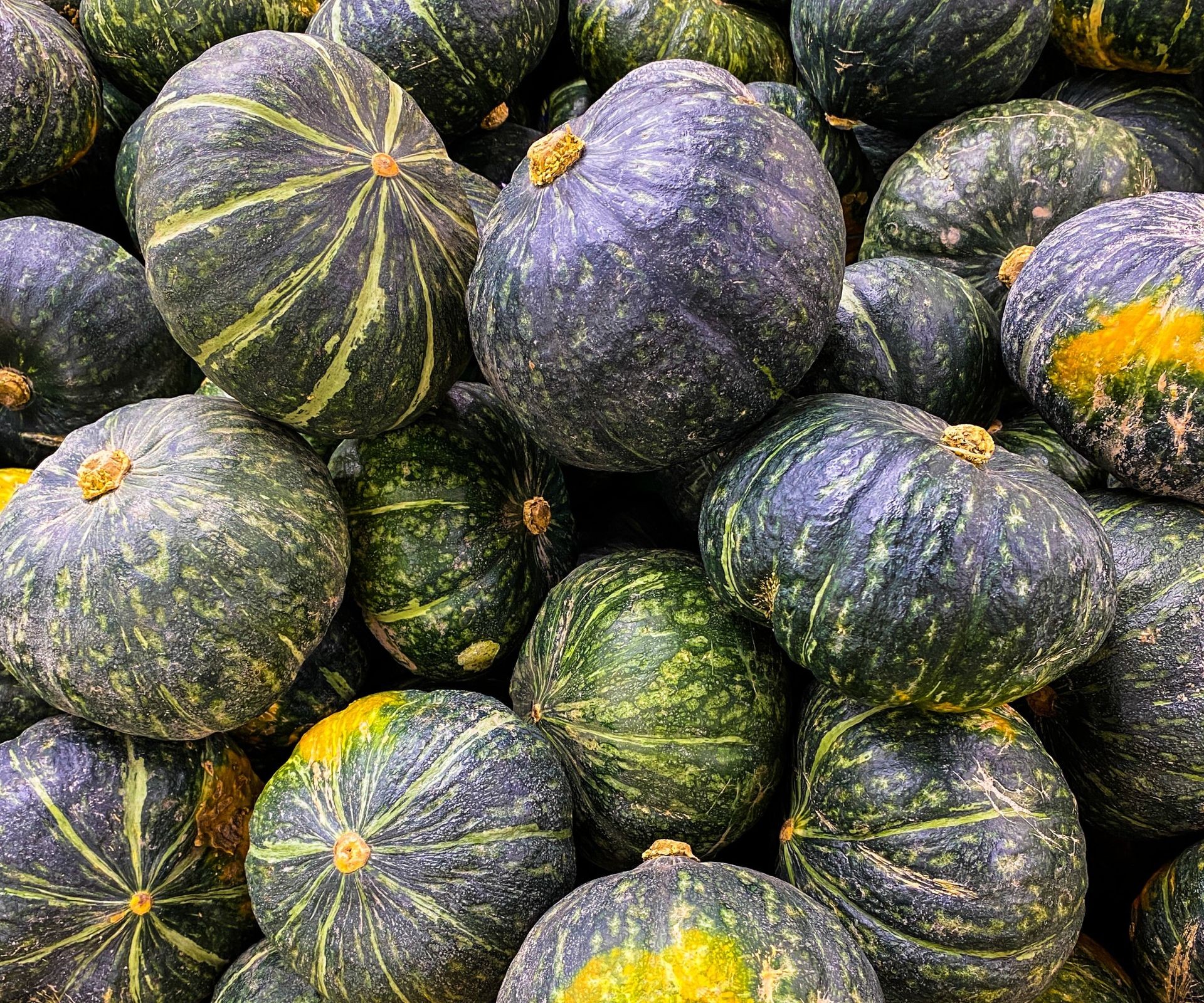 Pile of dark green kabocha squash
Pile of dark green kabocha squash
Carnival Squash
A smaller, visually striking winter squash, Carnival is a hybrid of acorn and sweet dumpling squash. It has a round, slightly flattened shape with distinctive deep ridges and vibrant streaks or patches of green, orange, and white. Its flavor is sweet and mild, similar to butternut squash. Carnival squash is perfect for baking or roasting, often cut in half or wedges. Its size and attractive appearance also make it suitable for stuffing.
 Colorful pile of striped carnival squash
Colorful pile of striped carnival squash
Butternut Squash
One of the most widely consumed winter squash, butternut is easily recognized by its elongated neck, bulbous base, and smooth, tan-colored skin. The interior reveals dense, bright orange flesh known for its sweet, nutty flavor and smooth texture when cooked. Butternut squash is incredibly versatile, excelling when roasted, which intensifies its sweetness. It’s a popular choice for soups due as it purees exceptionally well, but it’s also delicious in stews, salads, and baked dishes. It’s also packed with fiber and vitamins.
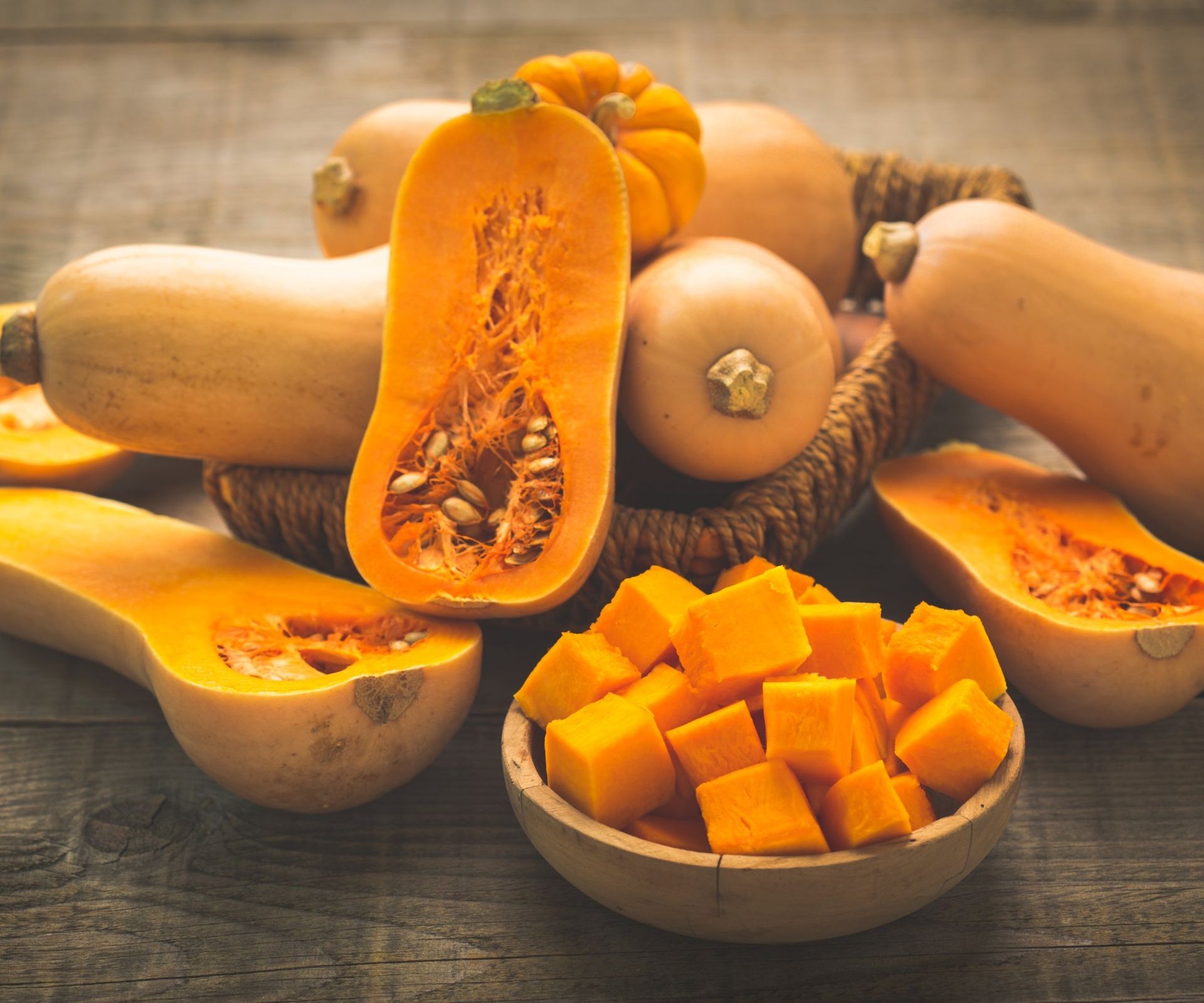 Collection of whole and prepared butternut squash
Collection of whole and prepared butternut squash
Blue Hokkaido
Despite its name, the Blue Hokkaido is botanically a type of pumpkin. It is notable for its unusual powdery blue-gray skin and striking, vibrant orange flesh. Originating from Japan, this squash offers a subtly sweet and distinctively nutty flavor. The flesh is dense and dry, making it ideal for roasting, mashing, or pureeing into soups and baked goods. Its unique color and flavor make it a fascinating addition to any garden interested in growing less common varieties.
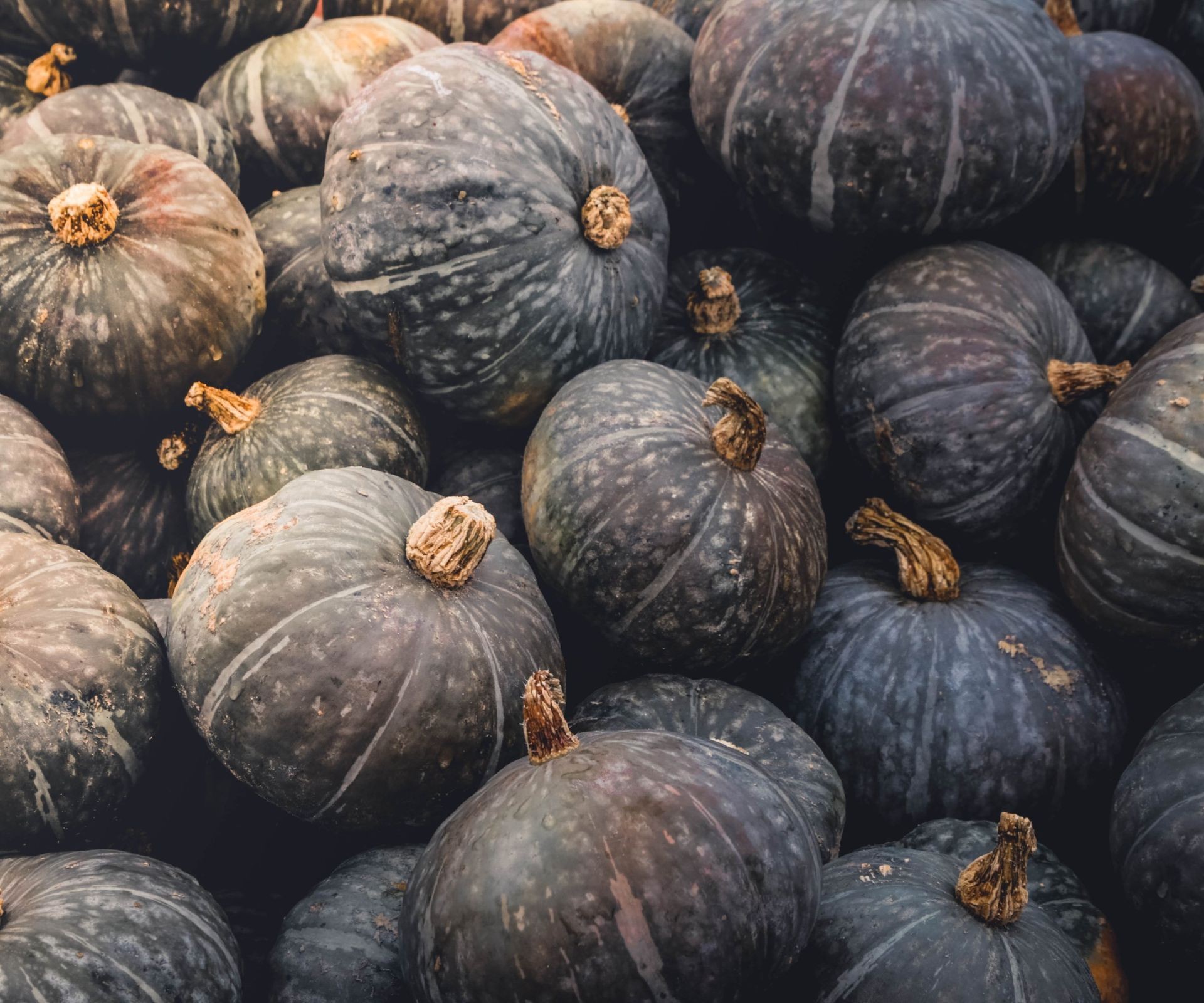 Stack of blue-gray blue hokkaido squash
Stack of blue-gray blue hokkaido squash
Choosing the Right Squash
Selecting the “best” squash ultimately depends on your intended use and personal taste preferences. Do you prefer a mild flavor and tender texture for quick summer meals, or a richer, sweeter profile ideal for roasting and long-term storage? Consider the space available in your garden and the specific growing requirements of each variety. Whether you’re looking for easy-to-grow zucchini or unique varieties like Spaghetti or Blue Hokkaido, there’s a squash perfect for every gardener and cook.
At Biogarden.Asia, we are passionate about helping you cultivate success, from choosing the right seeds to harvesting delicious produce. Exploring these diverse squash types can open up a world of culinary possibilities and gardening satisfaction. Why not try growing a new variety this season and discover a new favorite?



